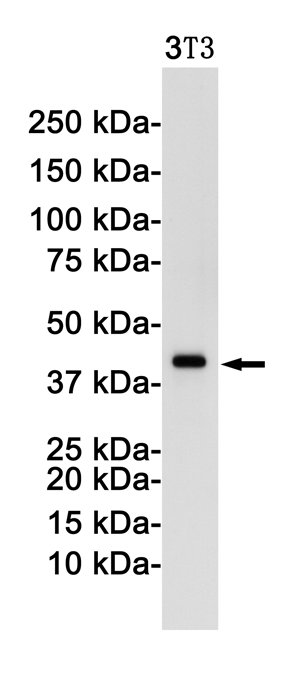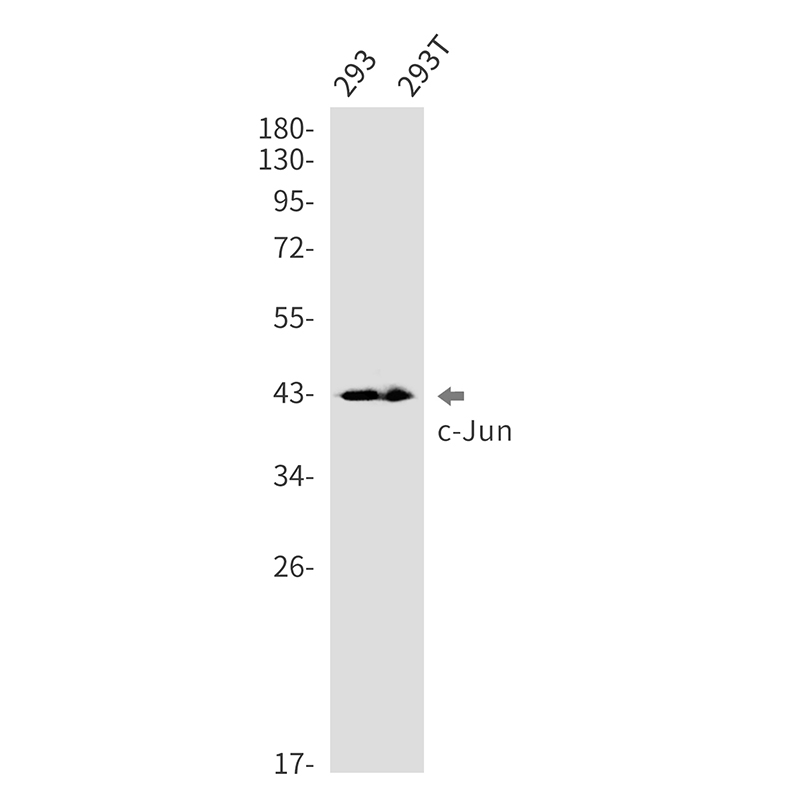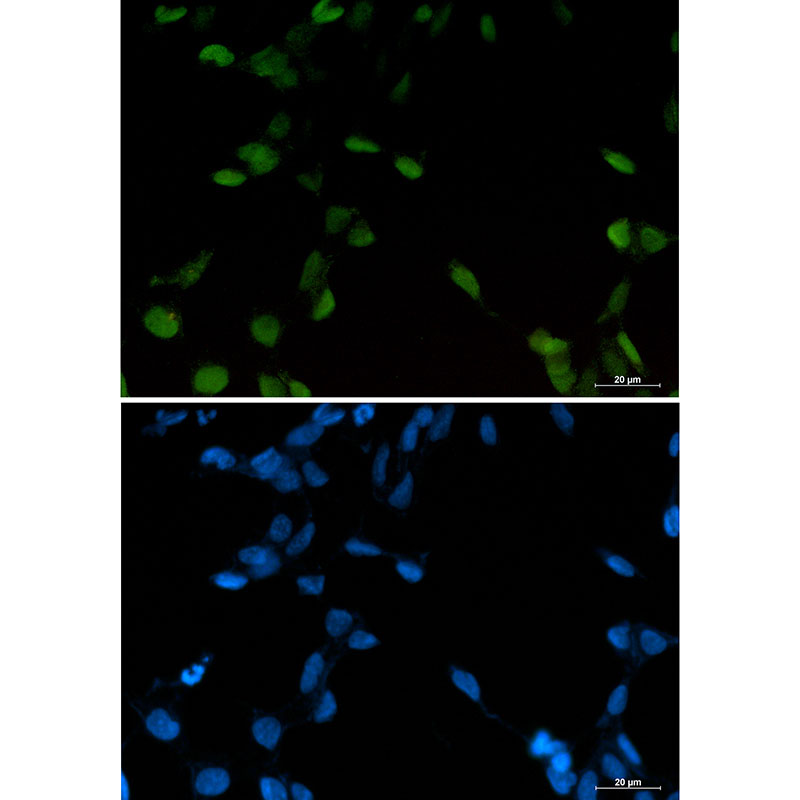


| WB | 咨询技术 | Human,Mouse,Rat |
| IF | 1/20 | Human,Mouse,Rat |
| IHC | 咨询技术 | Human,Mouse,Rat |
| ICC | 1/50-1/200 | Human,Mouse,Rat |
| FCM | 咨询技术 | Human,Mouse,Rat |
| Elisa | 咨询技术 | Human,Mouse,Rat |
| Aliases | Transcription factor AP-1; Activator protein 1; AP1; Proto-oncogene c-Jun; V-jun avian sarcoma virus 17 oncogene homolog; p39 |
| Entrez GeneID | 3725 |
| WB Predicted band size | Calculated MW: 36 kDa; Observed MW: 48,43 kDa |
| Host/Isotype | Rabbit IgG |
| Antibody Type | Primary antibody |
| Storage | Store at 4°C short term. Aliquot and store at -20°C long term. Avoid freeze/thaw cycles. |
| Species Reactivity | Human,Mouse |
| Immunogen | A synthetic peptide of human c-Jun |
| Formulation | Purified antibody in TBS with 0.05% sodium azide,0.05%BSA and 50% glycerol. |
+ +
以下是3篇关于c-Jun抗体的代表性文献,信息基于公开研究整理:
1. **"Activation of c-Jun N-terminal kinase by tumor necrosis factor-α in human neutrophils"**
*作者:Yu C, Rahimi N, et al.*
**摘要**:该研究利用c-Jun抗体(如抗磷酸化c-Jun抗体)通过Western blot技术,验证了TNF-α激活中性粒细胞中c-Jun N端激酶(JNK)信号通路的机制,揭示了其在炎症反应中的作用。
2. **"c-Jun regulates cell cycle progression and apoptosis by binding to the AP-1 site in response to oxidative stress"**
*作者:Shaulian E, Karin M.*
**摘要**:通过免疫沉淀(IP)和染色质免疫共沉淀(ChIP)结合c-Jun抗体,阐明了c-Jun在氧化应激条件下通过结合AP-1位点调控细胞周期和凋亡的分子机制。
3. **"Immunohistochemical analysis of c-Jun expression in human hepatocellular carcinoma"**
*作者:Ito Y, Sasaki Y, et al.*
**摘要**:研究使用特异性c-Jun抗体对肝癌组织进行免疫组化(IHC)分析,发现c-Jun在癌变组织中高表达,且与患者预后不良相关,提示其作为肿瘤标志物的潜力。
4. **"Selective activation of the JNK signaling pathway by c-Jun phosphorylation during neuronal apoptosis"**
*作者:Ham J, Eilers A, et al.*
**摘要**:通过Western blot和免疫荧光技术结合c-Jun抗体,证实神经元凋亡过程中c-Jun磷酸化选择性激活JNK通路,为神经退行性疾病研究提供了实验依据。
(注:以上文献为示例性质,实际引用时建议通过PubMed或学术数据库核对完整信息。)
c-Jun antibody is a widely used tool in molecular biology research, targeting the c-Jun protein encoded by the JUN gene. As a member of the AP-1 (Activator Protein 1) transcription factor complex, c-Jun plays pivotal roles in regulating gene expression linked to cell proliferation, differentiation, apoptosis, and stress responses. It dimerizes with other AP-1 family members (e.g., c-Fos) to bind DNA and modulate target genes involved in oncogenesis, inflammation, and development.
c-Jun antibodies are essential for detecting and quantifying c-Jun expression and activation in various experimental settings, including Western blotting, immunohistochemistry (IHC), immunofluorescence (IF), and chromatin immunoprecipitation (ChIP). Phospho-specific antibodies targeting phosphorylated c-Jun (e.g., at Ser63/Ser73 residues) are particularly valuable for studying its activation status, as phosphorylation by stress-activated kinases (e.g., JNK) enhances its transcriptional activity.
These antibodies have been instrumental in cancer research, given c-Jun's dual role as both a proto-oncogene and tumor suppressor, depending on cellular context. They also aid in studying neurological disorders, immune responses, and developmental processes. Validation of c-Jun antibodies typically involves knockout cell lines or siRNA-mediated knockdown to confirm specificity. Commercial antibodies are available from multiple suppliers, often with validated protocols for diverse applications. Proper controls are critical due to potential cross-reactivity with other Jun family proteins (e.g., JunB, JunD) or post-translational modification states.
×